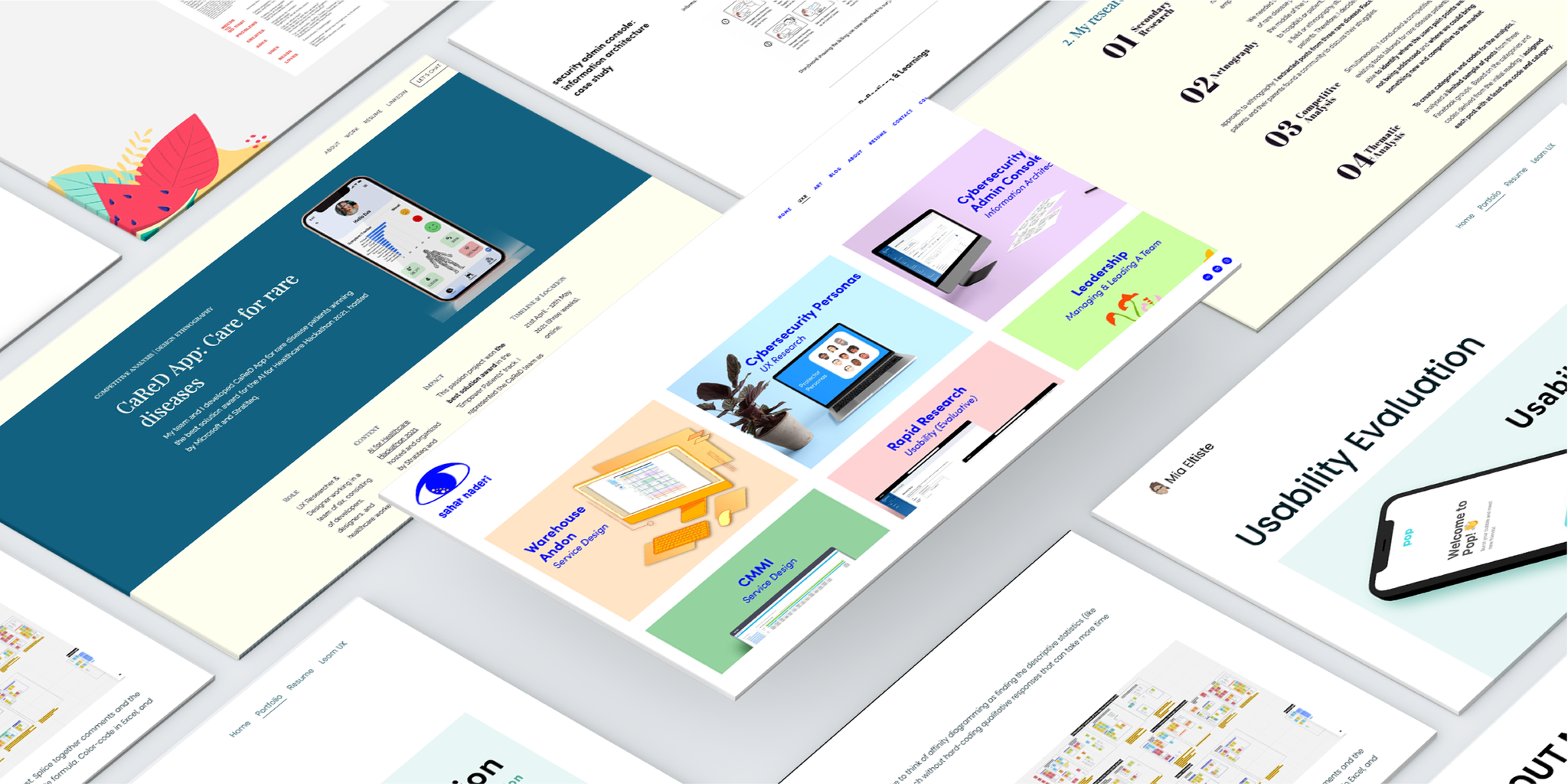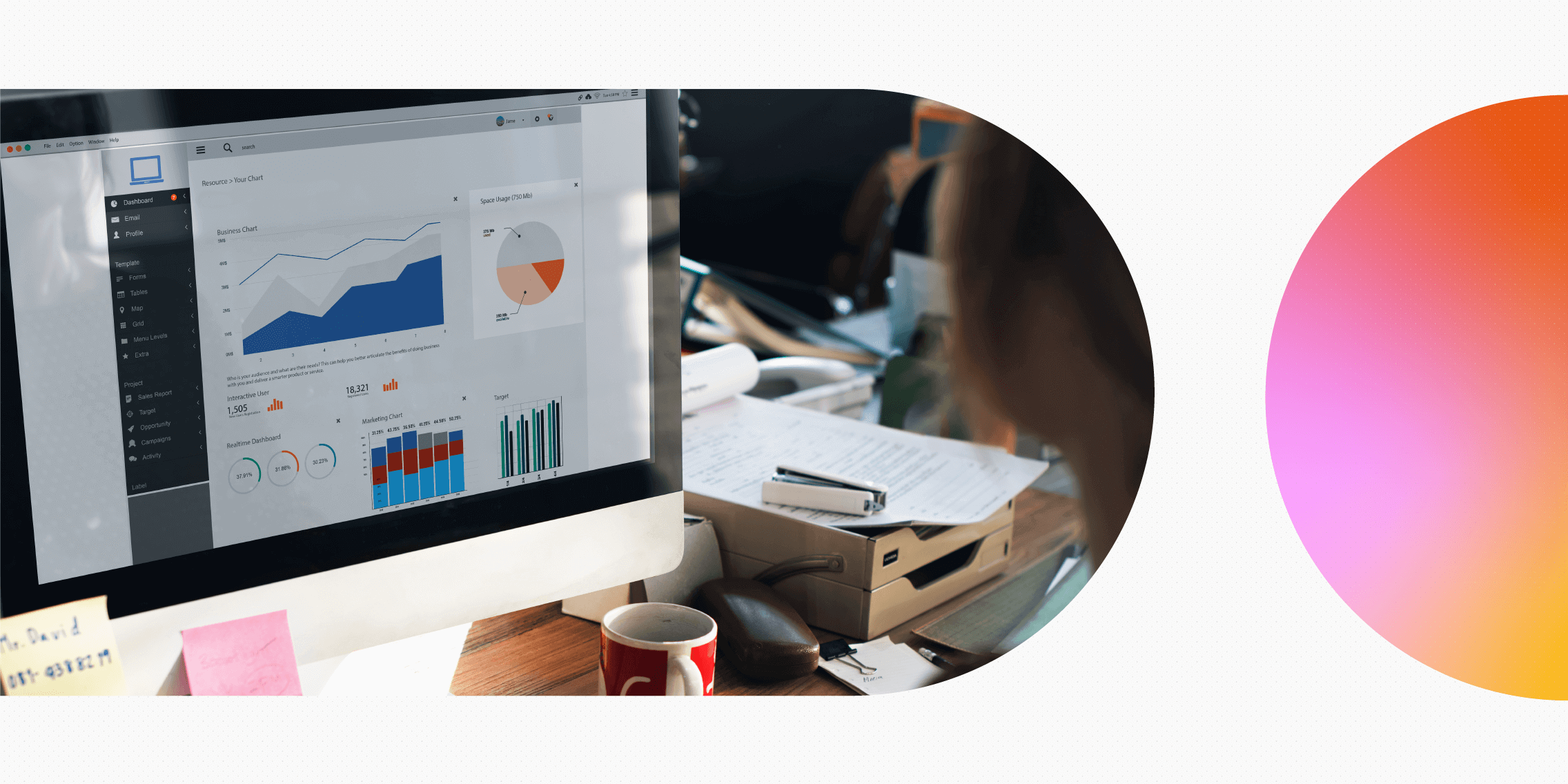What is a UX research report and why do you need one?
UX research report, also known as a user research report, is a visually appealing document written in plain language that summarises all the hard work the user researcher(s) has done on the project. The document should include research questions, methods, insights, and recommendations taken from your study. While UX research should continue throughout the project, a majority of the research should be done early in the discovery phase of the process. And this is also when a UX research report should ideally be created, so UX and UI designers have something to go on before they get too far into the design process.
UX research reports can take a couple of different formats. The most obvious of those is a written report, in the form of a PDF, which works especially well when you have a small group of stakeholders or are dealing with a geographically distributed network of team members. However, the other kind of UX research report is a presentation, in the form of slideshows or decks. Presentations work well if you’re speaking to a large audience that’s meeting together at the same time. You can also put these two together and do both, so no matter what type of team member or stakeholder you’re dealing with, they’ll understand your findings.
UX research reports are important because they alert your team and other stakeholders on your project to the valuable results of your work. If you can’t communicate your results, it can’t be used, and if it can’t be used, all your efforts were for nothing. So make sure you can communicate your findings so you can align your whole team on user goals and needs, prioritise specific ideas for development, and provide user insights to inform decisions.
What is the structure of a UX research report?
While UX research is different for every project, there are some things that all UX research reports should have. They include:
Introduction
Every research report should start with an introduction that explains the background of the project. This should include introducing the product or service you’re designing for and an overview of your research.
Research goals
This section should present any research questions and goals that guided your study. This can be as simple as understanding what users want from your product, but it gives an idea of what you’re looking for in your research.
Methodology
In this section, you should outline the various methodologies you used in your study, whether they’re qualitative, such as user interviews, quantitative, such as online surveys, or both. Make sure you avoid professional jargon that your audience won’t understand. Instead, try to present your methods in plain language so anyone can comprehend how your research was conducted.
Key findings
This is the results section of your research report. Here, you simply lay out what you found without any additional commentary from you or any other expert.
Recommendations
This section should make recommendations and state takeaways that stakeholders can use in their designs. These recommendations and takeaways should use your findings from the previous section to come up with actionable insights, such as design changes or opportunities to bring in new users. You should also list limitations and where further research is needed here.
Appendices
Anything that wasn’t represented in the body of the report should go into the appendices, including interview transcripts, surveys, and anything else that was an artifact of your study. Providing it here can allow interested parties to access it, but allows everyone else to ignore it.
|
How to write an effective UX research report (step-by-step)
Now that you know the major parts of a research report, you can get to writing with these key steps:
Define your goals and objectives
You should define for your stakeholders what your research goals were, and for you too. After all, while stakeholders will be interested, this should also remind you what your objectives were for doing this research. You should define your goals even before you’ve started your research, and in your report,you should reiterate what goals you decided on. This should lead to a more focused research report.
Understand your audience
Different segments of your audience will have different needs when it comes to your report. Addressing designers and developers is different from addressing marketers or executives, for example. So you’ll want to consider who your report will be read by and tailor your information to them.
You may need to create a report with the basic information for stakeholders with no experience with UX, and include appendices with additional information for those on your team. Alternatively, you’ll want to give different presentations highlighting different information to various groups of stakeholders. Either way, you must ensure that your message is communicated effectively so those reading or listening to your report can act upon it.
Summarise your research
You may want to include every detail of what you found in your research but that would be boring for your audience. So make sure you include only what’s really important to your study by highlighting only the most salient details and findings. This should correspond to the research goals you set at the beginning of the report.
Pay special attention to your findings
Your key findings is the section that everyone will read, whether they understand research methods or not. So this section must be presented in a way that is easily understood by everyone you present your report to. Make sure your provide a summary of your findings and discuss them in relation to your research questions. Then include more technical aspects further down so UX designers can make use of them.
Always provide recommendations
It can be tempting to finish your report with your key findings and leave it at that. But if you do, you’re depriving your audience of actionable items for the future. Make sure you discuss your recommendations based on the findings. For example, if you’ve found that users can’t find the search box on your site, you need to make specific recommendations about why this is the case and what you think the designers should do to remedy the situation.
State your limitations
No single study can address every single need of your users. At some point, you will encounter limitations, such as money or time. So as an addendum to your recommendations, you should acknowledge your research limitations and recommend future research to address these.
UX research report best practices
Here are some tips that will help you polish up your UX research report and make sure it’s impactful and effective:
Use clear, consistent language and avoid jargon
In your research report, you should use plain language with a consistent voice and tone. That means even if you have multiple people working on a report, your language shouldn’t change, so make sure you assign a single editor who can ensure this.
Avoiding jargon is important, too. While some technical language may be included if your readers will understand it, it’s important to make sure things are stated plainly or that technical jargon is defined in a glossary in the report.
Tell a story
Instead of throwing raw facts and figures at your audience, make a story of your research. Turn your research into a case study with a beginning (introduction and research questions), middle (methodology and findings), and end (recommendations). This is an easy way to have the information you present be more engaging.
Put in user feedback
Include illustrative quotes from users in the findings section if you have them. They can drive home your results and prove your point.
Include effective images
While we’ve largely focused on words here, don’t forget about including images, such as schematics, charts, graphs, and illustrations in your report. These are a powerful way to make your quantitative and qualitative results more exciting and interesting. Plus, illustrations can make anything in your report more accessible. So, make sure you pay adequate attention to your images.
Make the report visually pleasing
Your research report should be pleasing to the eye. Use colors, images, and textual hierarchy to make sure your report is as visually pleasing as possible. If needed, someone from the UI team should be able to help you bring the principles of document design to your report.
There is no standard length for a research report, but if it’s going to be over 20 or so pages, you should include a table of contents with anchor links to different sections of the report. That way, your readers can easily get to the sections that matter most to them.
What next? Presenting and sharing your UX research report for maximum impact
There are several ways to present and share your results to your team and stakeholders. Here are the most popular:
This means distributing your document via email as a PDF or Word doc. This can include all kinds of results at different levels of detail for different results; however, it also means many people in your audience won’t read it. So while this is a good first step, it shouldn’t be the only thing you do.
Presenting your research live
This is the best way to make your results impactful. They should provide a thorough idea of your research in plain language. Though you can present your research in person or remotely, you should do your best to schedule a time when all stakeholders can attend, or hold different meetings for different stakeholders.
You can also record and make your presentation available to anyone to watch asynchronously, but this isn’t the best solution.
Workshops
Workshops are an interactive way of presenting your research. They can be held remotely or in person, but either way, everyone should have access to the tools you’ll use, whether pen and paper or digital tools. In a workshop, you and your audience will collaborate on putting a UX research report together from the data you’ve gathered. This is great for ensuring you don’t get too trapped in your own point of view but could lead to bandwagon jumping by your audience.
Writing an effective UX research report: the takeaway
A UX research report is a document that summarises all stakeholders and team members need to know about a research project. This document should be clear and to the point while still including everything your team members need to understand your study. You should include written data, user feedback, and visuals, including graphs, charts, and illustrations, to make the research report as interesting as possible, and share your results as either a written report or a presentation — or, ideally, both! Make sure you present your actionable insights in a compelling report so your stakeholders can understand and take advantage of the knowledge you’ve gained.
If you’d like to learn more about user research, including how to plan, execute, analyse and communicate user research effectively, take UX Design Institute’s university credit-rated Professional Certificate in User Research.
Or if you’d like to read more about user research, take a look at these articles: The importance of user research in UX design, Analysing UX research and sythesising results into valuable insights, and How to choose the right user research technique for your design project






